While the OP is problematic in the sense that it is not really a programming question, here my try to fit the data with a function that has a reasonable small amount of parameters, i.e. 6. The code somehow shows my line of thinking in retrieving this solution. It fits the data very well, but probably has no physical meaning whatsoever.
import matplotlib.pyplot as plt
from mpl_toolkits import mplot3d
import numpy as np
np.set_printoptions( precision=3 )
from scipy.optimize import curve_fit
from scipy.optimize import least_squares
data0 = np.loadtxt( "XYZ.csv", delimiter=",")
data = data0.reshape(11,16,4)
tdata = np.transpose(data, axes=(1,0,2))
### first guess for the shape of the data when plotted against x
def my_p( x, a, p):
return a * x**p
### turns out that the fit parameters theselve follow the above law
### themselve but with an offset and plotted against z, of course
def my_p2( x, a, p, x0):
return a * (x - x0)**p
def my_full( x, y, asc, aexp, ash, psc, pexp, psh):
a = my_p2( y, asc, aexp, ash )
p = my_p2( y, psc, pexp, psh )
z = my_p( x, a, p)
return z
### base lists for plotting
xl = np.linspace( 0, 30, 150 )
yl = np.linspace( 5, 200, 200 )
### setting the plots
fig = plt.figure( figsize=( 16, 12) )
ax = fig.add_subplot( 2, 3, 1 )
bx = fig.add_subplot( 2, 3, 2 )
cx = fig.add_subplot( 2, 3, 3 )
dx = fig.add_subplot( 2, 3, 4 )
ex = fig.add_subplot( 2, 3, 5 )
fx = fig.add_subplot( 2, 3, 6, projection='3d' )
### fitting the data linewise for different z as function of x
### keeping track of the fit parameters
adata = list()
pdata = list()
for subdata in data:
xdata = subdata[::,1]
zdata = subdata[::,3 ]
sol,_ = curve_fit( my_p, xdata, zdata )
print( sol, subdata[0,2] ) ### fit parameters for different z
adata.append( [subdata[0,2] , sol[0] ] )
pdata.append( [subdata[0,2] , sol[1] ] )
### plotting the z-cuts
ax.plot( xdata , zdata , ls='', marker='o')
ax.plot( xl, my_p( xl, *sol ) )
adata = np.array( adata )
pdata = np.array( pdata )
ax.scatter( [0],[0] )
ax.grid()
### fitting the the fitparameters as function of z
sola, _ = curve_fit( my_p2, adata[::,0], adata[::,1], p0= ( 1, -0.05,0 ) )
print( sola )
bx.plot( *(adata.transpose() ) )
bx.plot( yl, my_p2( yl, *sola))
solp, _ = curve_fit( my_p2, pdata[::,0], pdata[::,1], p0= ( 1, -0.05,0 ) )
print( solp )
cx.plot( *(pdata.transpose() ) )
cx.plot( yl, my_p2( yl, *solp))
### plotting the cuts applying the resuts from the "fit of fits"
for subdata in data:
xdata = subdata[ ::, 1 ]
y0 = subdata[ 0, 2 ]
zdata = subdata[ ::, 3 ]
dx.plot( xdata , zdata , ls='', marker='o' )
dx.plot(
xl,
my_full(
xl, y0, 2.12478827, -0.187, -20.84, 0.928, -0.0468, 0.678
)
)
### now fitting the entire data with the overall 6 parameter function
def residuals( params, alldata ):
asc, aexp, ash, psc, pexp, psh = params
diff = list()
for data in alldata:
x = data[1]
y = data[2]
z = data[3]
zth = my_full( x, y, asc, aexp, ash, psc, pexp, psh)
diff.append( z - zth )
return diff
## and fitting using the hand-made residual function and least_squares
resultfinal = least_squares(
residuals,
x0 =( 2.12478827, -0.187, -20.84, 0.928, -0.0468, 0.678 ),
args = ( data0, ) )
### least_squares does not provide errors but the approximated jacobian
### so we follow:
### https://stackoverflow.com/q/61459040/803359
### https://stackoverflow.com/q/14854339/803359
print( resultfinal.x)
resi = resultfinal.fun
JMX = resultfinal.jac
HMX = np.dot( JMX.transpose(),JMX )
cov_red = np.linalg.inv( HMX )
s_sq = np.sum( resi**2 ) /( len(data0) - 6 )
cov = cov_red * s_sq
print( cov )
### plotting the cuts with the overall fit
for subdata in data:
xdata = subdata[::,1]
y0 = subdata[0,2]
zdata = subdata[::,3 ]
ex.plot( xdata , zdata , ls='', marker='o')
ex.plot( xl, my_full( xl, y0, *resultfinal.x ) )
### and in 3d, which is actually not very helpful partially due to the
### fact that matplotlib has limited 3d capabilities.
XX, YY = np.meshgrid( xl, yl )
ZZ = my_full( XX, YY, *resultfinal.x )
fx.scatter(
data0[::,1], data0[::,2], data0[::,3],
color="#ff0000", alpha=1 )
fx.plot_wireframe( XX, YY, ZZ , cmap='inferno')
plt.show()
Providing
[1.154 0.866] 5.0
[1.126 0.837] 10.0
[1.076 0.802] 20.0
[1.013 0.794] 30.0
[0.975 0.789] 40.0
[0.961 0.771] 50.0
[0.919 0.754] 75.0
[0.86 0.748] 100.0
[0.845 0.738] 125.0
[0.816 0.735] 150.0
[0.774 0.726] 200.0
[ 2.125 -0.186 -20.841]
[ 0.928 -0.047 0.678]
[ 1.874 -0.162 -13.83 0.949 -0.052 -1.228]
[[ 6.851e-03 -7.413e-04 -1.737e-01 -6.914e-04 1.638e-04 5.367e-02]
[-7.413e-04 8.293e-05 1.729e-02 8.103e-05 -2.019e-05 -5.816e-03]
[-1.737e-01 1.729e-02 5.961e+00 1.140e-02 -2.272e-03 -1.423e+00]
[-6.914e-04 8.103e-05 1.140e-02 1.050e-04 -2.672e-05 -6.100e-03]
[ 1.638e-04 -2.019e-05 -2.272e-03 -2.672e-05 7.164e-06 1.455e-03]
[ 5.367e-02 -5.816e-03 -1.423e+00 -6.100e-03 1.455e-03 5.090e-01]]
and

The fit looks good and the covariance matrix seems also ok.
The final function, hence, is:
z = 1.874 / ( y + 13.83 )**0.162 * x**( 0.949 / ( y + 1.228 )**0.052 )


